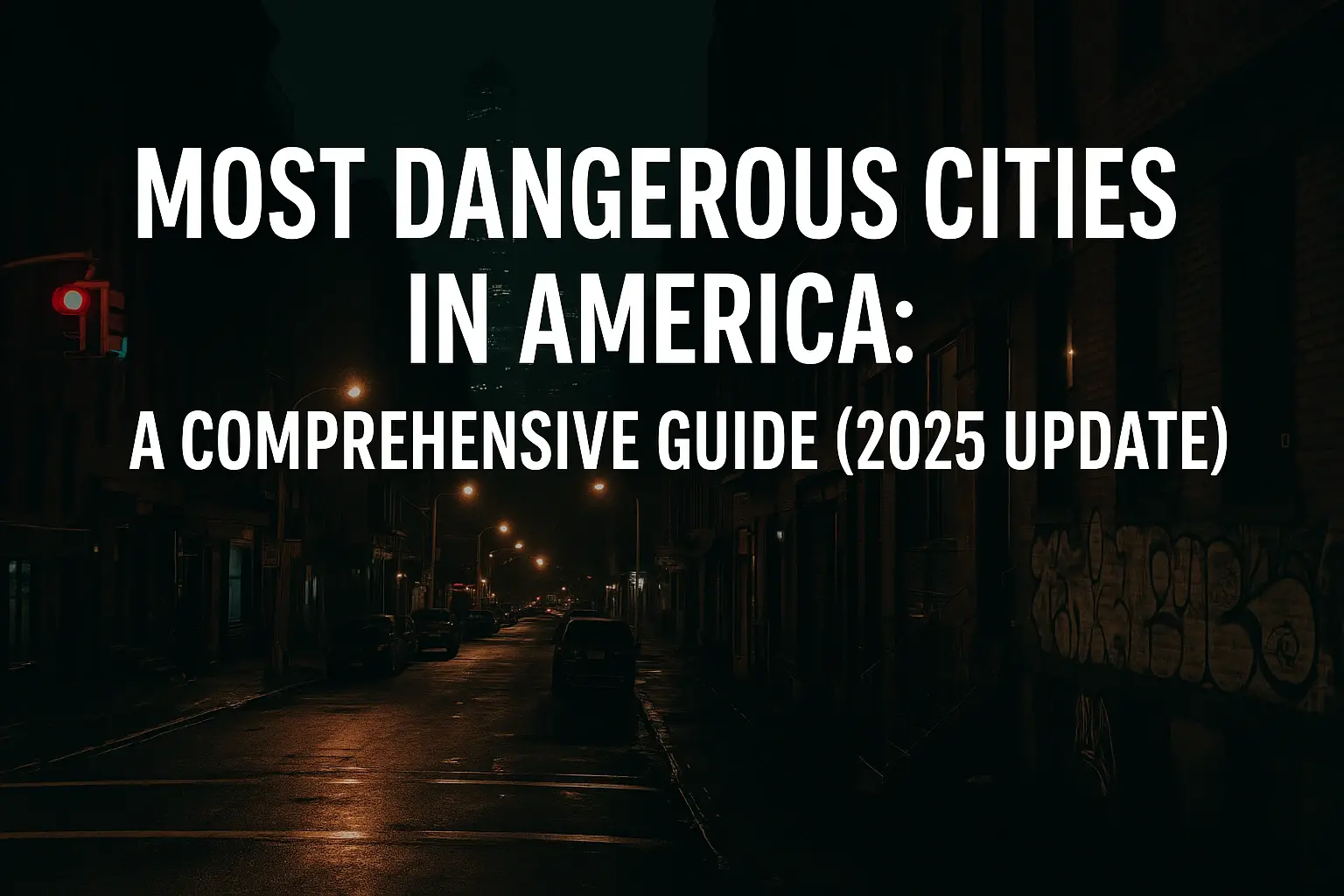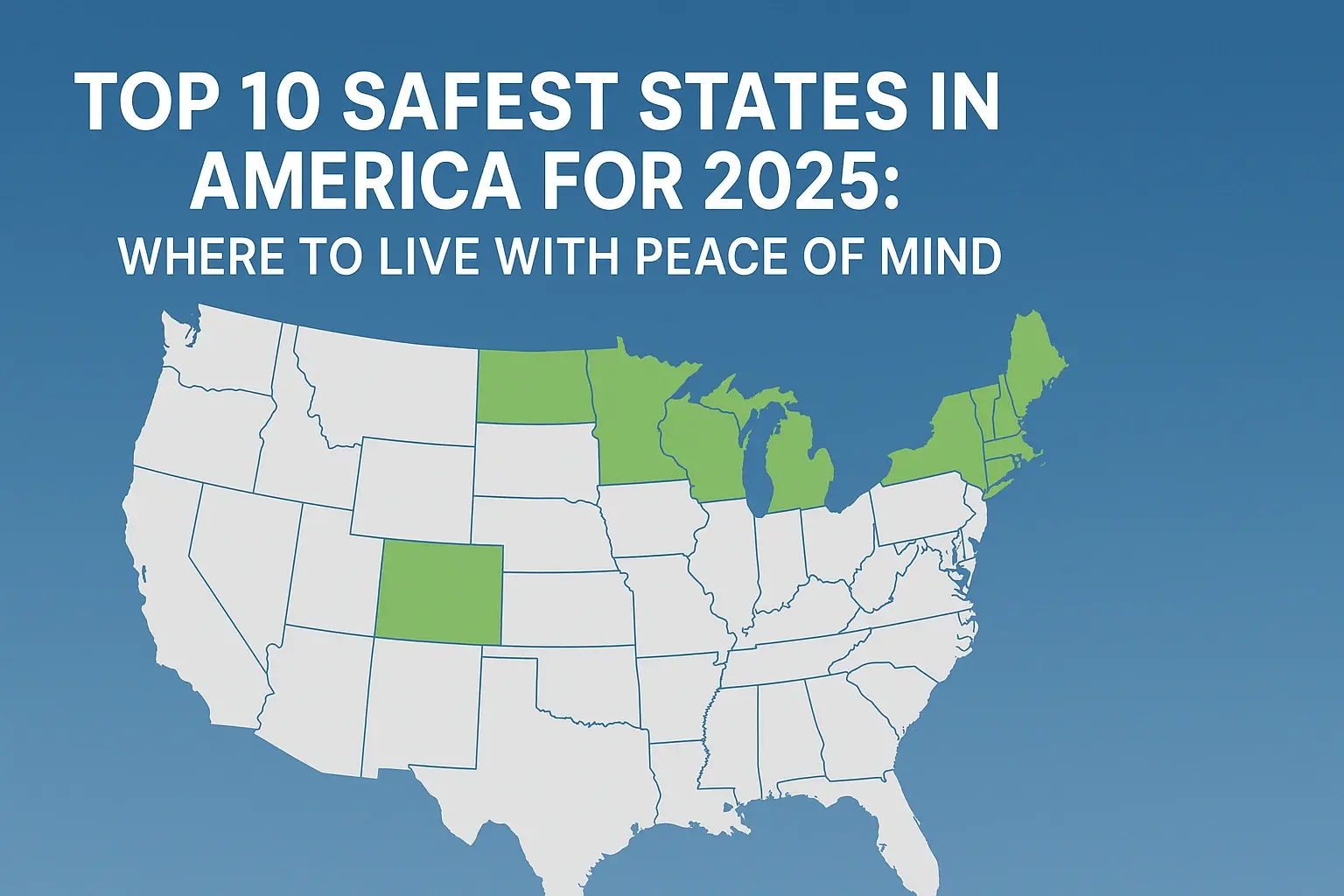Urban safety is a pressing concern for many Americans, as high crime rates in certain cities impact residents' quality of life and influence decisions about where to live or visit. Understanding which cities are considered the most dangerous in 2025 is crucial for those seeking to make informed choices about relocation, investment, or travel. This comprehensive guide explores the most dangerous cities in America, based on the latest crime statistics, and examines the factors contributing to their challenges. Additionally, we discuss the role of home security systems in protecting residents and highlight recent trends that suggest progress in reducing crime.
Top 5 Most Dangerous Cities in America in 2025
The following cities are ranked among the most dangerous in the United States for 2025, based on data from reputable sources such as U.S. News & World Report, American Security Force, and Jagran Josh. These rankings consider violent crime rates (murder, robbery, aggravated assault) and property crime rates (burglary, theft).
1. Memphis, TN
-
Population: ~633,533
-
Crime Rate: 97.64 per 1,000 people
-
Homicide Rate: 50.9 per 100,000
-
Most Common Crimes: Aggravated assault, homicides, robbery
-
Challenges: Memphis faces significant issues with violent crime, particularly homicides. In 2023, the city recorded nearly 400 homicides, with projections suggesting a similar trend in 2025. A shrinking police department and socioeconomic challenges like poverty exacerbate the situation.
-
Recent Trends: Despite its reputation, Memphis has seen some progress. A July 2025 report indicates a 20% overall crime reduction, with murders down 15% and aggravated assaults down 14% compared to 2024 (TBA Articles). However, incidents like the deadly April 2025 for children highlight ongoing concerns (MLK50).
2. St. Louis, MO
-
Population: ~282,985
-
Crime Rate: 87.10 per 1,000 people
-
Homicide Rate: 66 per 100,000
-
Most Common Crimes: Aggravated assault, murder
-
Challenges: St. Louis is noted as one of the most dangerous cities globally, with juvenile crime and lenient gun laws contributing to its high homicide rate. The lack of permits or background checks for concealed guns adds to the challenge.
-
Recent Trends: Encouragingly, St. Louis has reported significant crime reductions in 2025. The first quarter saw the lowest crime rates in over 20 years, with homicides down 45%, robberies down 20%, burglaries down 33%, and auto thefts down 39% (St. Louis City).
3. Detroit, MI
-
Population: ~663,149
-
Crime Rate: 66.09 per 1,000 people
-
Homicide Rate: 41 per 100,000
-
Most Common Crimes: Aggravated assault, robbery
-
Challenges: Detroit has faced long-standing issues with gang violence and economic hardship, contributing to its high crime rates.
-
Recent Trends: In 2025, Detroit has shown progress, with a 12% reduction in overall crime in the first quarter compared to 2024. Homicides decreased by 16.2%, non-fatal shootings by 44.6%, and sexual assaults by 30% (Detroit Police Department).
4. Baltimore, MD
-
Population: ~568,184
-
Crime Rate: High, with specific rates varying by source
-
Homicide Rate: 46 per 100,000
-
Most Common Crimes: Aggravated assault, murder
-
Challenges: Baltimore struggles with law enforcement distrust and crime spikes in certain neighborhoods, with some areas seeing nearly 80% increases in crime in recent years.
-
Recent Trends: Baltimore has made remarkable strides in 2025, with a 22% decrease in homicides and a 23.4% drop in non-fatal shootings. The city recorded only 68 homicides in the first six months, marking a 50-year low (Baltimore Police Department).
5. New Orleans, LA
-
Population: ~366,013
-
Crime Rate: 60.98 per 1,000 people
-
Homicide Rate: 41 per 100,000
-
Most Common Crimes: Carjacking, violent crimes
-
Challenges: Economic inequality and poverty have historically driven high crime rates in New Orleans, particularly violent crimes like carjacking.
-
Recent Trends: New Orleans is experiencing historic declines in crime in 2025, with only 55 murders recorded by July 14, one of the lowest counts in 50 years. Violent crime is down 20% (FOX 8).
|
City |
Population |
Crime Rate (per 1,000) |
Homicide Rate (per 100,000) |
Most Common Crimes |
|---|---|---|---|---|
|
Memphis, TN |
633,533 |
97.64 |
50.9 |
Aggravated assault, homicides, robbery |
|
St. Louis, MO |
282,985 |
87.10 |
66 |
Aggravated assault, murder |
|
Detroit, MI |
663,149 |
66.09 |
41 |
Aggravated assault, robbery |
|
Baltimore, MD |
568,184 |
Not specified |
46 |
Aggravated assault, murder |
|
New Orleans, LA |
366,013 |
60.98 |
41 |
Carjacking, violent crimes |
Factors Contributing to High Crime Rates
Several factors contribute to the high crime rates in these cities:
-
Poverty and Unemployment: Economic hardship often correlates with increased crime, as limited opportunities can lead to desperation and social instability.
-
Gun Availability: Lenient gun laws, as seen in cities like St. Louis and Memphis, contribute to higher rates of gun violence.
-
Social Inequality: Disparities in access to education, healthcare, and jobs can perpetuate cycles of crime.
-
Police-Community Relations: Strained relationships, as noted in Baltimore, can hinder effective crime prevention.
Home Security Systems: A Vital Tool for Safety
For residents in high-crime cities, home security systems are a vital investment that enhances safety and provides peace of mind.
Types of Home Security Systems
-
Alarm Systems: Equipped with sensors for doors and windows, these systems trigger alarms during unauthorized entry and can connect to monitoring services for rapid response.
-
Surveillance Cameras: Indoor and outdoor cameras deter criminals and provide evidence. Features like motion detection and remote monitoring are common.
-
Smart Locks: These allow remote control of home access and alert homeowners to unauthorized attempts.
-
Smart Home Integration: Systems can sync with lights and thermostats to simulate occupancy, deterring potential burglars.
Benefits of Home Security Systems
-
Deterrence: Visible cameras and alarms discourage criminals.
-
Peace of Mind: Residents feel safer knowing their homes are protected.
-
Quick Response: Monitored systems ensure rapid emergency response.
-
Insurance Discounts: Many insurers offer discounts for homes with security systems.
Choosing the Right System
Consider the following when selecting a system:
-
Needs Assessment: Evaluate the level of security required based on your neighborhood’s crime rate.
-
Budget: Systems range from affordable DIY options to comprehensive professional setups.
-
Monitoring Options: Choose between self-monitored or professionally monitored systems.
-
User-Friendliness: Opt for systems that are easy to install and operate.
Initiatives to Reduce Crime
Many of these cities are implementing strategies to combat crime:
-
Memphis: Community engagement and neighborhood watch programs are being promoted (Memphis Shelby Crime Commission).
-
St. Louis: Initiatives like "One St. Louis" and "ShotStoppers" focus on community-based violence prevention.
-
Detroit: Programs like "One Detroit" aim to reduce gang violence through community outreach.
-
Baltimore: Targeted interventions and youth programs have contributed to historic crime reductions.
-
New Orleans: The New Orleans Crime Coalition is working to improve police-community relations (NOPJF).
FAQ
1. What makes a city dangerous?
A city is considered dangerous based on its crime rates, particularly violent crimes like murder, robbery, and aggravated assault. Property crimes, such as burglary and theft, also contribute to a city’s overall danger level.
2. Are there any initiatives to reduce crime in these cities?
Yes, cities are implementing various strategies, including community policing, youth engagement programs, and targeted interventions. For example, St. Louis and Detroit have community-based violence prevention programs, while Baltimore focuses on reducing gun violence.
3. How can residents protect themselves in high-crime areas?
Residents can enhance safety by:
-
Installing home security systems
-
Staying vigilant and aware of surroundings
-
Joining neighborhood watch programs
-
Keeping informed about local crime trends
4. Is it safe to visit these cities?
While these cities have high crime rates, many areas are safe for tourists, particularly those with strong community presence or heavy policing. Researching specific neighborhoods and taking precautions is advisable.
5. What role does poverty play in crime rates?
Poverty often correlates with higher crime rates due to limited opportunities, social instability, and desperation. Addressing poverty through economic development and social services can help reduce crime over time.
Conclusion
While Memphis, St. Louis, Detroit, Baltimore, and New Orleans rank among the most dangerous cities in America in 2025, recent data shows promising trends in crime reduction. These cities are actively working to address their challenges through community initiatives, improved policing, and social programs. For residents, home security systems offer a practical solution to enhance safety and provide peace of mind. By understanding the factors driving crime and supporting efforts to create safer communities, these cities can continue to make progress toward a brighter future.
Resources:





